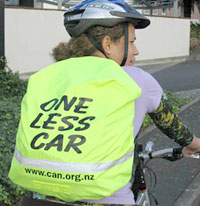I remember thinking that I’d left it too late to go and get some lunch before a 1pm meeting via skype.
I’d been in another one all morning which had left me feeling somehow, a little flat. I was currently immersed in configuring my brand spanking new and grunty as hell PC which had arrived after months of concerted lobbying (read: whinging) by yours truly.
I looked up at the clock, prompted by some rude grumblings in my belly only to be dismayed by the news it told me: 12.45pm – not enough time to obtain and devour a sandwich before the meeting. Oh for the days before webcams when you could sneak a bite or two around the edges of a conversation and no-one was any the wiser. My heart fell even further when I realised I wouldn’t be free until 2.30-3pm by which time all convenient eateries would be closed, or picked clean by the vultures from the surrounding office buildings. Such are the trials of an inner city worker.
I don’t remember what I did next exactly, probably consoled myself with how wonderful, gorgeous and silent my new computer was, but about 5 minutes later, my agenda for the afternoon and the course of our lives was changed irrevocably.
Agenda for afternoon of Tuesday 22nd February (updated)
- 12.51pm: get under desk (much, much harder than it sounded to do).
- 12.51and-a-bit: attempt to stay covered by now alarmingly mobile desk – try to avoid glass from shattering windows.
- 12.51and-a-bit-more: shout to colleagues to get under cover and keep away from windows – opportunity to consider present situation re. being four storeys off the ground with a further 3 storeys of concrete above my head (but mind kept wandering off-task to how Wiz and Seraphine were).
- 12.52pm: decide whether to get out from under now thankfully, stationary desk (tough decision).
My 1pm meeting was now so far from my mind as to be in another country, one where the ground doesn’t rear up and swerve like some drunken bus driver from hell. My agenda was suddenly, second to second and minute to minute, about survival.
In that first minute I recall so many noises and sensations, none of them good. I couldn’t believe how hard it was to negotiate the small distance off my chair and under the desk. I just kept getting biffed around and slammed into my desk a couple of times before I managed to get under it. I could hear screaming, both inside and outside my building – as the windows broke, the outside was suddenly a lot louder and I could hear the screams of people pouring into Latimer Square outside my window. I remember wondering, stupidly, how they got there so quickly. There was some other incredibly loud noise which I would find out about later.
I remember marvelling at how lightly and matter-of-factly the office immediately turned itself upside down and threw itself to the floor. I remember seeing my mobile phone sail off my desk (along with most everything else) and noting where it slid under a pile of what previously would have been terribly important work but was now nothing more than paper and folders I would happily step on without a second thought when I got out. Everyone on my floor started calling out to each other to check in but they all shouted at the same time and I couldn’t tell whether they were OK, hurt or trapped and calling for help.
When I crawled out from under my desk with my bag I seriously wondered for a moment whether we should stay put – trying to remember the earthquake emergency procedures. I briefly saw my colleagues go past the doorway, I noticed Vaea already had her fire warden armband on and was taking control. Grant came in to see me – I put the question to him – I think I must have sounded a bit dazed and he made sure I understood that item 5 on my agenda was to get the f&*k out of the building immediately. (He would never use that language, of course, some words have been changed to incriminate the innocent).
This is where I got a bit strange. I looked sadly at my new computer which had toppled over. I then reached out and set it upright – the only such object in the room – I think I seriously considered taking it with me for a split-second before reaching for my jacket. I always keep my wallet and keys in my jacket so I instinctively knew I had everything important. Having noticed where the mobile landed was a stroke of luck as I honestly don’t remember picking it up. I then had to pick my route out of the office. It involved some clambering and leaping and suddenly I was in the now much darker hall near the lifts and stairs. There was the sound of running water very close by but I couldn’t see it anywhere. Grant was making sure I was coming and got me to the stairs. Someone was having a panic attack on the landing and another of my colleagues was helping them breathe and get control. There were other people crying but still moving. It seemed a long way down those stairs right then.
The ground floor was covered in glass where the large glass wall that displayed the buildings tenants had shattered – this had stayed intact in the September earthquake and I started to get a very bad feeling.
We walked outside, a block wall had collapsed in the carpark on top of a couple of cars. We crossed the road into Latimer Square where literally hundreds of people were gathering in varying states of shock, disbelief or just numbness. It wasn’t until I was on the other side of the road when I turned around to look at our building and saw the cause of the huge noise I’d heard in the shake – The entire front half of Charlie B’s backpacker hotel across the road from us had collapsed behind its protective barricades (it had been declared unsafe following the September quake so was empty thankfully). Clouds of dust were merging into a haze all over the park. The Christchurch Club, a historic wooden building on the parks west side had also collapsed. No-one could remember whether it had been closed after September and therefore was empty or not.
Another historic backpackers up the road had partially collapsed – this time with many people inside – the first injured people we saw started coming from there. They were bleeding and covered in dust and in shock. People were walking in stunned circles.
Agenda for afternoon of Tuesday 22nd February (updated) continued…
6. Contact Lizzie and Seraphine
7. Contact Grilly and siblings
8. Get home
I immediately phoned Lizzie and somehow got a precious few seconds of talk time with her – she and Seraphine were both OK but the house had been trashed inside. Those few seconds of hearing her voice… she sounded calm and brave even though I knew she wasn’t feeling it – she was conscious of how Seraphine would be reacting to her. She told me she’d be fine – go get my mother. I loved her so much right then.
I spent the next half hour trying unsuccessfully to call my family. I was worried for my brother who works in a large print press facility with many heavy machines in the CBD and Grilly who of course lives by herself. I didn’t know she wasn’t at home…
Texts seemed to be intermittently getting through. I heard from my sister that she was OK and going for her daughters. My brother too, although very little information beyond he was alive.
A friend that I’d thought was still overseas appeared out of nowhere. She was in shock and very disorientated. In my own shock-induced daftness I simply held her and said “I thought you were in Sri Lanka?” After a while she kind of ‘woke up’ and swung into action herself, looking out and caring for those around us in shock. She finally decided to walk to her house, just south of the CBD but returned minutes later saying the roads were blocked, a building had come down just south of Latimer Square – this was the CTV building. When I eventually left the park she was looking after some very upset people and offering neck and shoulder rubs, helping any way she could.
Another friend appeared out of the crowd carrying her 6 month old baby – she was crying. She had been in the CTV building and somehow managed to escape. She had no idea who’d gotten out and who hadn’t. Rumours started spreading through the park that the cathedral had collapsed. I didn’t want to believe that.
The only person I hadn’t managed to reach on my list was Grilly. After speaking to Lizzie the plan had changed. There was obviously no way to get home to Lyttelton – buses instantly stopped and the roads would be jammed with people fleeing the city. There was no way the tunnel would be open and unaffected. I wished I’d biked to work that day. I found out later that many people got to Heathcote and simply walked over the Bridle Path like a re-enactment of the early settlers crossing the Port Hills in reverse. A couple would lose their lives in a rockslide after dark.
My colleague Vaea had her car and was heading east – her daughter had got in touch and said the house was badly damaged. Steve decided to walk it – it proved the quicker option. I stayed with Vaea and we limped along in the eastbound traffic for two and a half hours to get to Aranui. I got out and walked at Cowles Stadium where major liquefaction had swallowed a car and caused a river to be flowing over the road. There were massive cracks and upshifts in the road out there. As I got closer to Grilly’s house the flooding and liquefaction grew worse but all the houses were standing. I was dreading what I might find.
It was nearly 4 hours after the quake when I walked up the drive. I heard voices and a long-time neighbour was at the door. I heard Grilly’s voice down the hall and I felt like hugging everyone. She was OK, but she had just got home herself – having been carried the last stretch, over the flooding by two men from down the street. She too had been in the central city I was finding out and lucky to be here. Her story is amazing…







